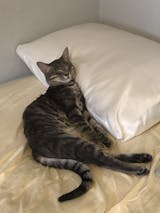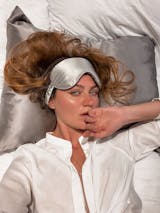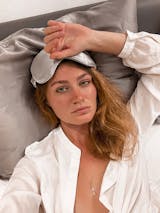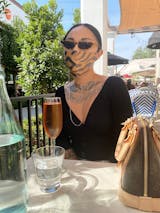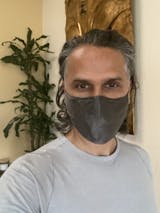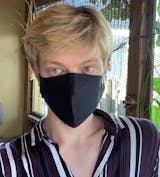Everyone is talking about inclusive beauty. But what exactly is inclusive beauty? Or accessible beauty? Thankfully, brands are becoming far more conscious about integrating civil rights and accessibility into their businesses. All the way from product formulation to sales and marketing - companies are being encouraged to make the beauty industry more realistic.
And why?
There is a dark shadow to unrealistic ideals all the way from mental health issues to eating disorders. The fashion and beauty industry have a long history of selective representation. But we are now experience a much welcome revolution of society advocating its lack of support of discrimination and the importance of representing all humans fairly.
In this article, you will learn what inclusive beauty means and why diversity is important.
What Does Inclusive Beauty Mean?
Inclusive beauty is the acceptance of all individuals from all backgrounds, abilities, and appearances. Diverse and inclusive beauty is about making beauty accessible to all humans irrespective of their race, body type, skin tone, gender, sexual identity, religion, age, or ability.
Inclusive beauty is revolutionary as it empowers all beings to shine as they are, without shame. It allows everyone to be seen, heard, understood, loved, and accepted.
Historically the ideals of beauty and the beauty industry have been dominated by a very small and selective visual representation. The ideal portrayal of ‘beauty’ as defined by the media and the beauty industry has been white women who are tall, skinny, clear-skinned, and ‘feminine’ in appearance.
There has been a very clear narrative that this is the set of ideals that women should be striving towards in order to be deemed as beautiful. And this is a massive issue. Because most women do not look like this. As women battle a variety of issues such as equality and empowerment across the board - industries directly marketed towards women like fashion and beauty need to be examined and scrutinized. Are they helping us to progress? Or hindering our freedom?
Up until very recently the beauty industry has been largely dominated by the ‘ideal’ of white skin, almost zero body fat, and flawless sparkling skin. And there has been a very clear message to women all across the globe - that this is the epitome of beauty. That this is what women should be striving for.
But the issue is, that this is extremely isolating for women who do not fit into this narrative, and not only that. It has been extremely detrimental to female empowerment and self-empowerment across the board.
What Are Inclusive Beauty Standards?
What is a beauty standard? A beauty standard can be understood as an overt or covertly communicated ideal which is received by the viewer as the ‘epitome of beauty’. This can easily be observed as the advert’s protagonist. The protagonist is the main figure of the advert, and is perceived as the desired ideal.
There is not an issue with having a protagonist per se. The issue is that the protagonist is always the same type of person or, in the case of beauty and fashion, woman. This results in society looking collectively towards one ideal as being attractive, and everything else that deviates from this ‘standard’ as being unattractive.
Beauty standards have always been set, and until now we have been following along pretty mindlessly. Inclusive beauty standards make us dive deeper into the importance of fair representation. And encourages us to unpack the dangerous shadow that follows the failure to maintain realistic, diverse, and accessible ‘beauty standards’.
Inclusivity encourages brands to use a wide variety of models to remove discrimination from every aspect of their business - all the way from to marketing and advertising standards to product formulations. The accessible beauty movement wants to remind women (and men alike) that they are perfect just the way they are. Self-development and wanting to improve certain things about yourself is not an issue per se, it’s just important to understand where this drive comes from.
For example, if you wish to improve your skin texture - is it driven through a lack of confidence and self-deprecating comparison to unattainable ideals? Or is improving your skin texture just just something that you fancy doing for you? There is a big difference between being driven by external disempowerment compared to self-empowerment and self-appreciation.
So what type of ways can you observe inclusive values being implemented?
Inclusive Beauty Standards
-
Sexuality And Gender Neutral Products
Gender neutral products help to include individuals from the LGTBQ+ community who have previously been misrepresented and underrepresented. Instead of marketing products towards men or women, the beauty industry is now seeking to cater for the LGBTQ+ (lesbian, gay, bisexual, trans, queer, plus) community. Individuals that do not identify with being hetereosexual, male or female can feel extremely isolated with current marketing techniques. Because they do not resonate with marketing directed at men, women, nor heterosexual behaviour.
-
A Wide Variety Of Representation In Marketing Material
Advertising protagonists showing men and women of all colors, shapes, sizes, religions, cultures, abilities, and backgrounds.
-
Realistic Ideals And Beauty Standards
Realistic marketing is so important in order to empower rather than disempower. Unrealistic ideals keep individuals chasing an unattainable goal whilst perpetually feeling unworthy. Realistic marketing and inclusivity ensures that buyers are choosing to support a brand and use a product from an empowered and conscious position. As opposed to using depreciating manipulation that extorts money from consumers who feel unworthy.
-
Minimal To Zero Photoshopping
Photoshopping has been an age-old issue. And is still an on-going battle. Whilst there is a massive growth in skin positivity and body positivity, there is also a simultaneous growing marketing for technology that enhances the ability for everyday people to photoshop. Photoshopping itself isn’t an issue, it’s what and how we photoshop that is the issue. Photoshopping to create fictional unrealistic ideals creates fantasy standards that cannot ever be achieved.
-
Products Which Can Be Used By All
Ensuring that products are accessible across the board is also more widely accepted and demanded now. You can easily observe this with ‘plus size’ clothing and fair to dark brown skin tone makeup shades.
How Do Beauty Standards Affect Society?
Inclusive beauty standards are really important as they turn a very discriminative industry into an inclusive, accessible, and diverse anti-racist industry. The inclusive beauty movement empowers women by encouraging them to be proud and comfortable with who they are. And choosing to consciously buy products if they want, as opposed to manipulating them to feel that they do need it.
Inclusivity and accessible beauty is all about self-care, self-love, and self-acceptance. And it aims to recognise and honour each woman in her own individual beauty.
The dark side of beauty standards is that they can have some pretty shocking effects on society and mental health. They can affect children, teenagers and adults. It is especially detrimental to the mental health of teens, and the increased depression and suicide rates amongst teens is now put down to the increase of social media (and the exposure to unrealistic standards promoted on them) in their lives.
The Effects Of Unrealistic Beauty Standards
-
Poor Mental Health; Depression, Anxiety, Isolation, Suicidal Ideation, Insomnia
Unrealistic beauty standards can cause people to struggle with their mental health, and feel isolated, misunderstood, and invisible.
Unhealthy addictions can form as a result of unrealistic beauty standards as women and girls attempt to achieve the unachievable.
-
Low Self-Esteem And Low Self-Confidence
The inability to compare or compete with unrealistic beauty standards can cause people to self-loathe. Unrealistic beauty standards are a breeding ground for depletion of self-love as individuals feel unworthy.
Which Inclusive Beauty Brands Can You Support?
If you are also passionate about inclusivity in beauty and fashion-influenced spaces - then here are some beauty brands that are women of color-owned and sustainable that you can support.
Axiology - Ericka Rodriguez
Axiology is here to bring you the most amazing zero-waste makeup products that are sustainable, plastic-free, and vegan. Their highlighters and balmies are multi-purpose products made with the cleanest ingredients.
Dew Mighty - Tiffany Buzzato
Dew Mighty offers innovative waterless beauty in the form of serum bars that can be used for facial or hair hydration. Enjoy the Dew Mighty sustainable, plastic-free, and travel-friendly multi-purpose bars of love.
M.S Skincare - Anit Hora
M.S Skincare brings you ancient ayurvedic wisdom within modern beauty. Anit combines accessible skincare products with herbal ayurvedic healing herbs for powerful results.
Carmen Lee is a certified yoga teacher, childbirth doula, and wellness coach. She educates on womb wellness, sacred wisdom, and ancestral-connected living. You’ll find her passionately advocating radical self-care and transformational self-empowerment through sustainable beauty and self-love rituals.
Some of the products promoted in our blog are from our online store. Many others are brands we have researched and found to be great examples of sustainable, ethical, and innovative brands in their field, and we don't make any profit from mentioning them in our blog. #CollaborationOverCompetition



